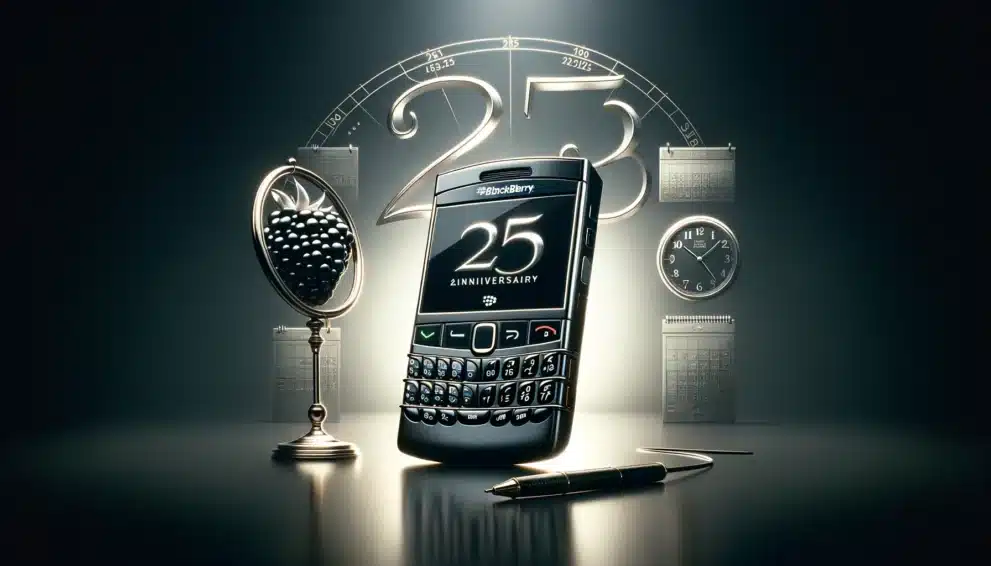
The Waterloo-based company BlackBerry introduced its smartphone to the market 25 years ago.
The company released the BlackBerry 850 on Jan. 19, 1999. It was marketed as a computer small enough to fit in one’s palm.
“This was a really big deal,” tech guru Mark Saltzman told CTV news. “The BlackBerry 850 was the first phone that you could read email on and reply to it. Otherwise you had to lug a very heavy laptop with you.”
An eponymous new movie has stirred sentimentality about BlackBerry of late, but looking back it remarkable how short the Canadian company’s reign was. By June 29, 2007 the whole thing would start to unravel.
The release of the iPhone in 2007 marked a pivotal moment in the mobile industry, signaling a paradigm shift in user expectations and technology standards. Apple’s introduction of the iPhone was not just the launch of a new product; it was the unveiling of a new concept that incorporated design as a prime selling point. The iPhone boasted a sleek design, a touch screen interface, and a versatile operating system capable of running sophisticated applications. This innovation redefined what consumers expected from their mobile devices, positioning the iPhone as not just a phone but a multifunctional device that could serve as a camera, a music player, and a gateway to the internet.
BlackBerry, at that time, was at the pinnacle of its success, particularly favored by business professionals for its secure email services, physical keyboard, and efficient battery life. However, the introduction of the iPhone initiated a gradual but undeniable erosion of BlackBerry’s market share. Consumers and eventually even corporate users began to favor the intuitive interface and extensive app ecosystem offered by the iPhone. BlackBerry attempted to counter this shift by releasing new models and updating its operating system, but these efforts were often seen as reactive rather than innovative.
The touch screen technology and the allure of the app-based ecosystem created by Apple set new industry standards. BlackBerry’s initial reluctance to depart from its traditional keyboard and to embrace a more internet-centric approach made it challenging for the company to keep pace with the rapidly evolving market. As the years passed, the iPhone and subsequent Android-based smartphones continued to gain market share, leading to a significant decline in BlackBerry’s dominance in the mobile market. This shift highlighted the importance of adaptability and innovation in the tech industry, where consumer preferences and technological capabilities evolve at an incredibly fast pace.
In 2013, new hope came in the form of new CEO John Chen, but for a decade before his ouster BlackBerry went nowhere.
The much hoped for turnaround never happened under Chen. In the most recent quarter under his watch, the company’s Q2 reported September 28, BlackBerry lost $47-million on revenue of $132-million, down 21 per cent from the $168-million it posted in the same period a year prior.
Chen’s ride was a bumpy one with few highlights. A spike in share price in 2021 was due to the company becoming a “meme stock” on Reddit. In June of that year, a report from US-based shareholder advisory firm Glass Lewis gave BlackBerry’s executive pay plan a grade of “F”, saying much of the jump in share price over the period wasn’t caused by anything achieved by management or the company and thus the rewards currently being doled out under the compensation plan’s share performance hurdles were unjustified.
When was the first BlackBerry released?
The BlackBerry 850, introduced January 19, 1999, marked a significant milestone as the first device under the BlackBerry brand, a name that would later become synonymous with smartphones focused on business and productivity. Designed and manufactured by Research In Motion (RIM), the BlackBerry 850 wasn’t a phone but rather a two-way pager. Its primary function was to send and receive emails, a groundbreaking feature at the time, especially for business professionals who needed constant connectivity.
The device featured a monochrome screen and a full QWERTY keyboard, a design choice that would become iconic in later BlackBerry models. This keyboard allowed for easier and more efficient typing compared to the numeric keypads of typical cell phones of that era. Despite its compact size, the 850 was a powerhouse in terms of functionality, offering wireless email, calendar, and task applications, positioning it as an early precursor to the modern smartphone.
Operating on the DataTAC network, the BlackBerry 850 provided a secure and reliable method for sending and receiving data, a critical requirement for its target audience of business users. RIM’s emphasis on security and efficient email communication laid the groundwork for the BlackBerry’s subsequent popularity among corporate users and government agencies.
The BlackBerry 850’s introduction was not just the launch of a new device but the beginning of a new era in mobile communication, combining the functionalities of a computer with the portability of a phone, a concept that would shape the future of mobile technology.






 Share
Share Tweet
Tweet Share
Share




Comment